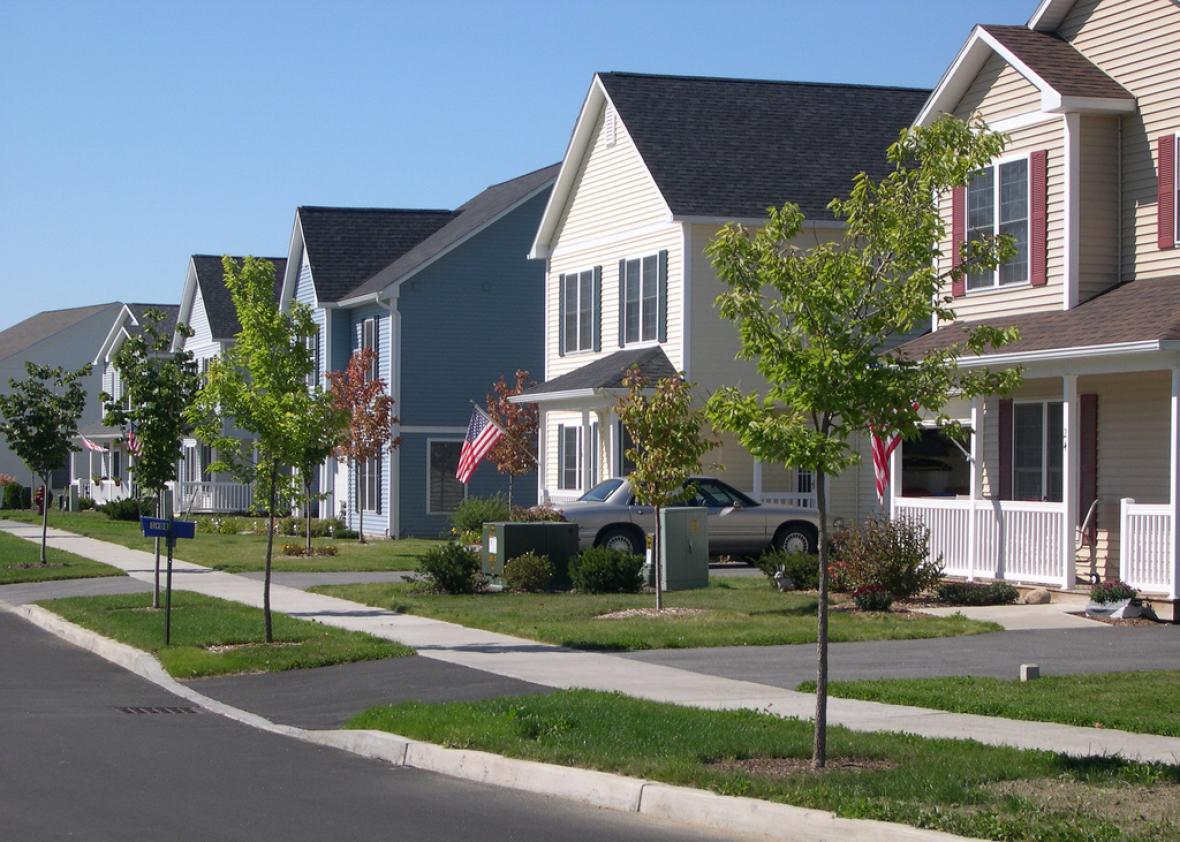It’s hard out there for a millennial navigating the housing market.
If you’re an American man or woman under the age of 35, there’s a historically large chance that you’re living with your parents. And if not, you’re very likely to be renting, and paying too much for the privilege. Only 34.8 percent of young adult households actually own their home, the smallest fraction since at least 1994, and among those who are forking over cash to a landlord, nearly half are considered “rent burdened”—meaning housing eats up around a third or more of their income.
And what about those who’d at least like to buy? Well, there’s a pretty good probability they’re getting boxed out of the market. On top of the challenges posed by tough post-crash mortgage standards, Bloomberg reports Thursday that prices for typical starter homes have been on a tear due to a lack of supply, and are now actually above their past bubbly heights:
Prices for the least expensive previously owned homes—properties at 75 percent or less of the median—were up 10.7 percent in August from a year earlier and now represent the only one of four price tiers to surpass the peak reached during the housing bubble, according to a housing index from CoreLogic Inc. The August pace was 5.9 percent above its pre-recession high in October 2006.
Why are cheap houses getting so expensive? Because nobody’s building them, for starters. In the years immediately following the recession, there was a sense among many urban planners and others in the real estate industry that developers would have to shelve their McMansion blueprints and start marketing smaller, more affordable new homes—possibly in slightly urban or at least walkable settings—in order to adjust to millennial tastes and finances. But that hasn’t really happened, even as more young adults have hit home-buying age. Instead, builders, convinced that all the market really craves is size, seem to have gone back to erecting large houses in far-out subdivisions. The median new home hit a record square footage in the first quarter of 2015, and shrank only slightly in the spring.
Developers might start turning their attention to first-time buyers soon. The Wall Street Journal has certainly suggested so much recently. (Then again, it made a similar prediction about a year ago). But for now at least, the market seems to be geared toward the more affluent, older customers. And so the least expensive older homes are getting costlier. “You’ve got the front end of a big wave of first-time homebuyers but the supply of affordable housing is not there to meet that wave,” Sam Khater, CoreLogic’s deputy chief economist, told Bloomberg. “What you’re seeing in the housing market is a reflection of the polarization of income. The builders are looking at it from that perspective: ‘If I have a choice of going up- and down-market, I’ve got to go up-market.’ “
And up-market means out of reach for most millennials.
